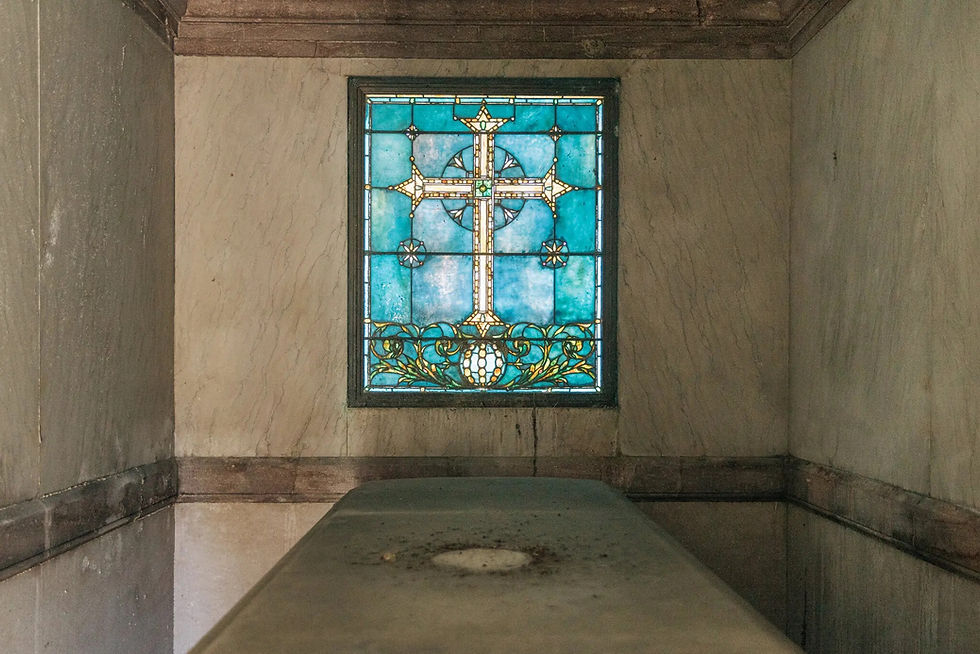
The Oriental Fascination: Tracing the Cultural Currents That Shaped Louis Comfort Tiffany
- Eduardo Montes-Bradley

- Sep 26
- 3 min read
Updated: Sep 27
NOTES FOR A DOCUMENTARY FILM
A conversation with architectural historian Richard Guy Wilson recently illuminated the complex web of cultural influences that shaped Louis Comfort Tiffany's celebrated fascination with the Orient. Wilson, author of "Mysticism, Alchemy, and Architecture: Designing Laurelton Hall," offered insights that extend far beyond the individual artist to reveal a broader intellectual cosmology of 19th-century America.
Beyond Individual Influence
My initial approach to understanding Tiffany's Oriental fascination had been personal—filtered through my own encounters with writers like Lev Nussimbaum (who wrote under the pen names Essad Bey and Kurban Said) and later Edward Said, as well as my childhood reading of Washington Irving's "Tales of the Alhambra" in a beautiful early edition by Editorial Araluce when I was eight. But as Wilson reminded me, understanding what drew me to Middle Eastern visual culture would not necessarily illuminate what captivated Tiffany a century earlier. The influences that shaped the great glass artist belonged to an entirely different cultural moment.
The Silver Connection
Wilson pointed to a more immediate and tangible influence: Edward C. Moore, the silver artist who worked for Tiffany's father in the family's silver company. Many scholars believe Moore's work exposed the young Louis Comfort to Oriental design principles and visual sensibilities that would later inspire his own travels to experience these influences firsthand.
This connection becomes visible in Tiffany's work—not just in his famous stained glass windows for churches, but perhaps most dramatically in the chapel he created for the 1893 Chicago World's Fair. That chapel, later moved to his Laurelton estate and now housed at the Morse Museum in Florida, bears the unmistakable marks of Byzantine and Middle Eastern influence.
The Byzantine Current
The Oriental Fascination: Tracing the Cultural Currents That Shaped Louis Comfort Tiffany
Our conversation took an unexpected turn toward ecclesiastical history and the profound impact of the Byzantine tradition on Western culture. This influence gained particular momentum with Napoleon's Egyptian campaign, which occurred well before Tiffany's time but set in motion a fascination with Oriental aesthetics that would ripple through the 19th century.
We agreed that understanding these cultural evolutions requires thinking of taste not as a series of discrete moments but as a continuous process—one that defies precise beginnings and endings. Cultural influence flows like a river, carrying aesthetic ideas across centuries and continents.
The Bridgetower Connection
The Oriental Fascination in Western culture became even clearer when I shared the remarkable story of Frederick Bridgetower and his prodigy son, who toured Europe at the turn of the 1800s dressed as an Ottoman oriental—despite likely being the grandson of an enslaved African from Barbados. That this young violinist inspired Beethoven's Violin Sonata No. 9, Op. 47 (later known as the Kreutzer Sonata) suggests how deeply Oriental imagery had penetrated European cultural consciousness by the late 18th century.
The American Oriental Tradition
Wilson reminded me that Tiffany existed within a larger community of American intellectuals drawn to Oriental themes. This tradition stretches back to Washington Irving and his enduring fascination with all things Oriental. Irving's "Tales of the Alhambra" continues to inspire admiration for the presence and culture of the Moors in Spain, representing an American literary engagement with Oriental imagery that preceded and helped prepare the ground for Tiffany's own explorations.
A Planetary System of Minds
By the end of our conversation, a clearer picture had emerged—not just of Tiffany as an individual artist, but of the cultural cosmology in which he operated. Tiffany was one celestial body in a vast planetary system of minds that included figures as diverse as Walt Whitman, Oscar Wilde, and John Keats. Each was shaped by and contributed to a broader cultural fascination with the Orient that transcended individual biography.
This perspective transforms our understanding of Tiffany's achievement. Rather than seeing his Oriental-inspired work as the product of personal taste or individual genius, we can appreciate it as part of a larger cultural movement—one that connected American artists and intellectuals to design traditions that spanned continents and centuries.
The beauty of Tiffany's stained glass and decorative objects thus becomes not just a testament to his individual vision, but a crystallization of cultural currents that had been flowing through Western imagination for generations. In his windows and lamps, we see not just colored glass, but the refracted light of a civilization's encounter with the visual wisdom of the East.
Suscribe to the Blog as we continue looking into The Oriental Fascination: tracing the cultural currents that shaped Louis Comfort Tiffany.









Comments